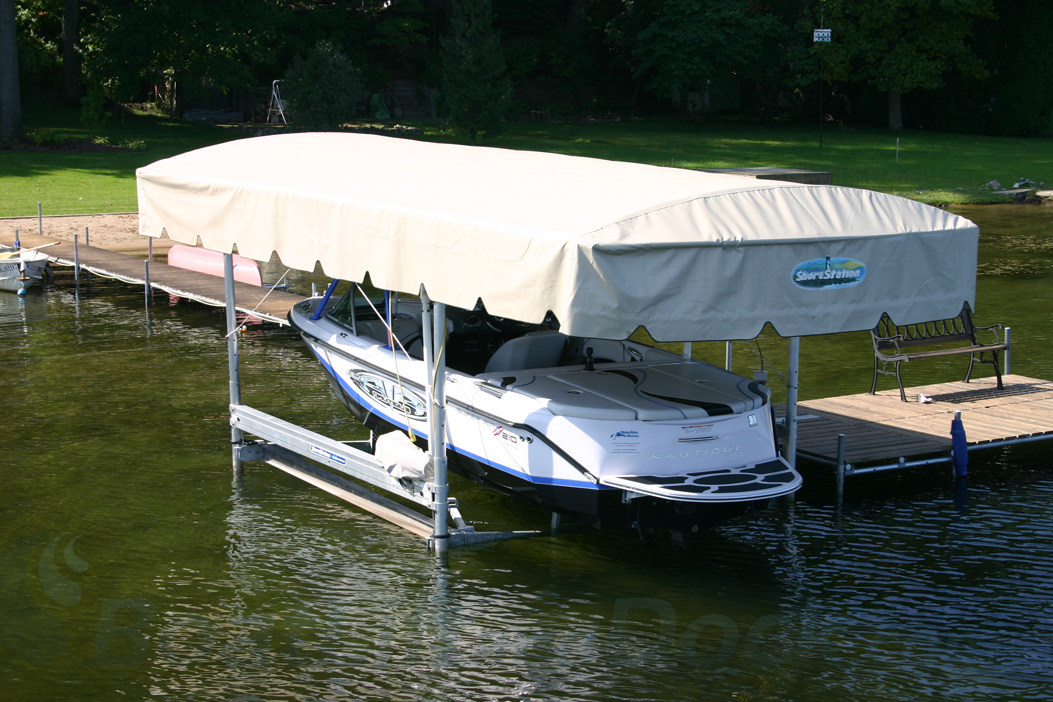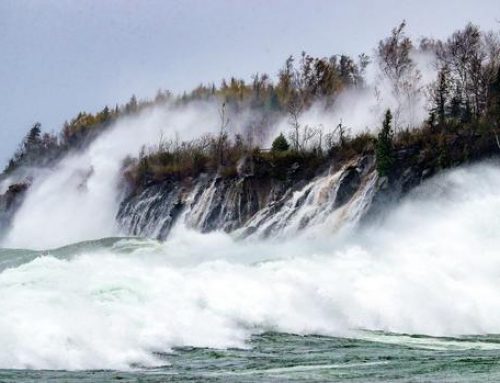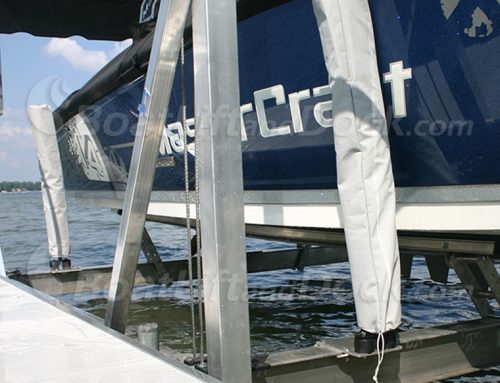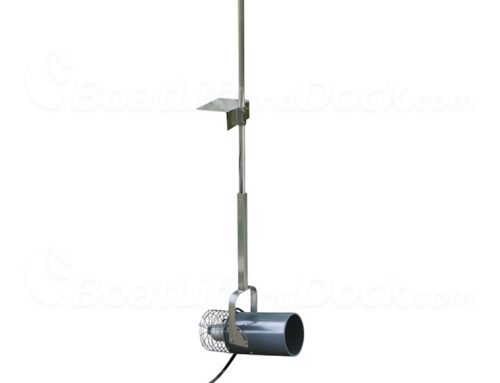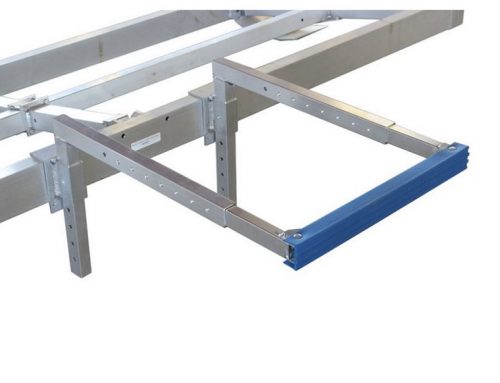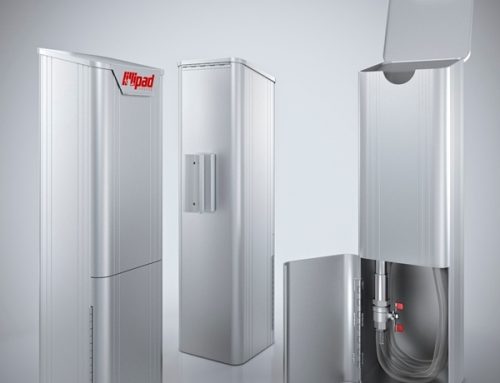In recent years, in Michigan at least, there has been a trend of lower water levels due to excessive temperatures and reduced precipitation. The resultant lowering in regional lake levels has required some adjustment for boat lift owners. Very often the boat lift must be moved to deeper water to achieve enough depth for craft to clear the bottom framework. Others, especially pontoon owners, have had to abandon their lifts and opt for either tie-off posts or freestanding canopy units with no bottom framework; allowing unfettered access from either end in shallow conditions.
On the other side of this are those whose shoreline is naturally deep. For these boaters, the installation of a boat lift can be difficult or impossible. There are limits to the practicality of using a freestanding boat lift. The extension legs or deep water kits, although an excellent solution to deeper conditions, are only effective up to certain depths, after which stability and safety become an issue.
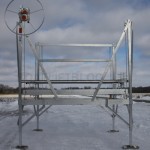 However, if you do need to install a lift in deeper water you do have some options to consider before shifting to a floating lift or submersible lift. Determining if a freestanding unit is usable for your needs requires a few calculations. Knowing your water depth where the lift will be placed is the first step. Regardless of manufacturer if you have more than 10 feet of water, freestanding lifts become unsafe and impractical; however, there are two basic measurements you need to consider outside of your water depth. These are the overall height of the lift and the amount of cradle travel available. These details should be listed in the specifications section of your owner’s manual. Following this, you then need to inquire if there are extension legs for your model that will allow you to use the lift in deeper water.
However, if you do need to install a lift in deeper water you do have some options to consider before shifting to a floating lift or submersible lift. Determining if a freestanding unit is usable for your needs requires a few calculations. Knowing your water depth where the lift will be placed is the first step. Regardless of manufacturer if you have more than 10 feet of water, freestanding lifts become unsafe and impractical; however, there are two basic measurements you need to consider outside of your water depth. These are the overall height of the lift and the amount of cradle travel available. These details should be listed in the specifications section of your owner’s manual. Following this, you then need to inquire if there are extension legs for your model that will allow you to use the lift in deeper water.
Both CraftLander and ShoreStation offer extension legs or deep-water kits that will allow the lift to be installed in up to ten feet of water. These systems use a combination of longer lift legs and bracing to give the lift the necessary stability in deeper conditions and are generally known as High Lifts. Most lift manufacturers include 20”- 36” telescoping legs within their design to accommodate uneven bottom conditions and up to 72”, or six feet of additional extension. This extension is not a total of six feet as at least four to eight inches of this 72” will be inside the upright of the lift itself. LakeShore (LSP) has 36” adjustable leveling legs and 72” extension legs, while ShoreStation (SS) offers 20”-55” of adjustable legs and 72” extension legs. CraftLander (CL) has 30” adjustable leveling legs and extensions available to get the lift safely operating in ten feet of water.
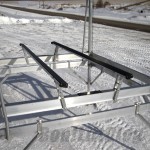 With the shifts in climate and weather patterns these days it is difficult to judge exactly which conditions to prepare for. However, one thing is certain to remain the same; no one enjoys moving their boat lift several times a season to keep up with shifting water levels. The bottom line is you want to be able to enter and exit the lift, even in rough conditions, without worrying about the boat hitting the cradle on your lift. To ensure this, you want to guarantee that there is enough clearance between the hull and the hull bunks and beam of the lift. One basic calculation is to determine the draft of your boat and then add 9″, this will tell you the minimum depth that you will need. Generally, 3′ of water will be enough for most lifts and anything under 10′ can be accommodated by freestanding lift designs, beyond that you may need to consider a floating or submersible lift. As always, to determine the specifics of your lift, consult your owners manual or contact a dealer.
With the shifts in climate and weather patterns these days it is difficult to judge exactly which conditions to prepare for. However, one thing is certain to remain the same; no one enjoys moving their boat lift several times a season to keep up with shifting water levels. The bottom line is you want to be able to enter and exit the lift, even in rough conditions, without worrying about the boat hitting the cradle on your lift. To ensure this, you want to guarantee that there is enough clearance between the hull and the hull bunks and beam of the lift. One basic calculation is to determine the draft of your boat and then add 9″, this will tell you the minimum depth that you will need. Generally, 3′ of water will be enough for most lifts and anything under 10′ can be accommodated by freestanding lift designs, beyond that you may need to consider a floating or submersible lift. As always, to determine the specifics of your lift, consult your owners manual or contact a dealer.
© 2013 BoatLiftandDock.com

